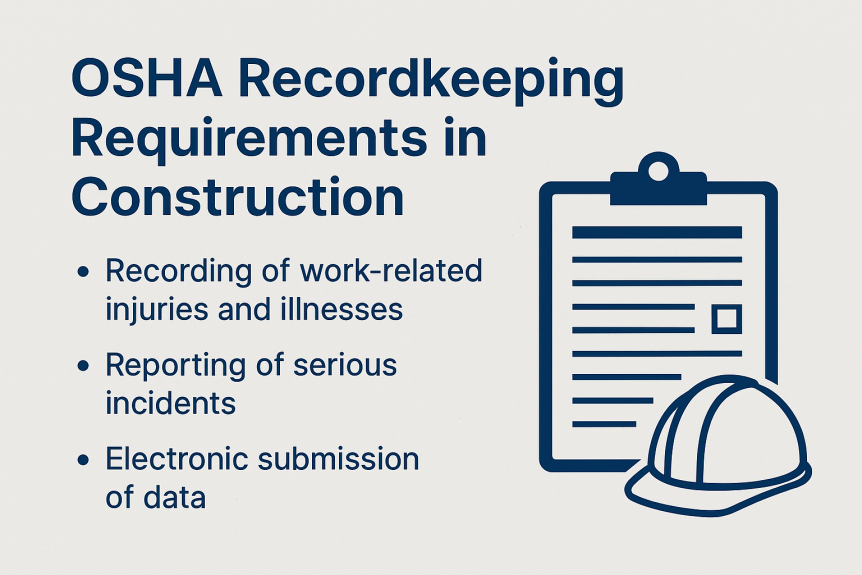In the construction industry, safety is non-negotiable. One of the most important tools for maintaining a safe work environment is OSHA recordkeeping. These requirements help construction companies track workplace injuries and illnesses, identify hazards, and improve safety protocols.
Why OSHA Recordkeeping Matters in Construction
OSHA recordkeeping is more than a compliance task—it’s a proactive safety strategy. By documenting incidents, construction employers can analyze trends, reduce risks, and foster a culture of safety.
Who Must Follow OSHA Recordkeeping Requirements?
Construction employers with 10 or more employees are generally required to maintain OSHA injury and illness records. Exemptions may apply based on your NAICS code, so it’s important to verify your classification.
Key OSHA Recordkeeping Forms for Construction
To comply with OSHA recordkeeping requirements, construction companies must use:
- OSHA Form 300 – Log of Work-Related Injuries and Illnesses
- OSHA Form 300A – Annual Summary of Work-Related Injuries and Illnesses
- OSHA Form 301 – Individual Incident Report
These records must be kept for five years and made available to OSHA and employees upon request.
OSHA Reporting Requirements for Construction Incidents
Certain serious incidents must be reported directly to OSHA:
- Fatalities – Within 8 hours
- Hospitalizations, amputations, or loss of an eye – Within 24 hours
Electronic Submission for Construction Employers
Construction companies that meet OSHA’s criteria must submit injury and illness data electronically via the Injury Tracking Application (ITA) between January 2 and March 2 each year.
Best Practices for OSHA Recordkeeping in Construction
- Train your team on what qualifies as a recordable incident
- Audit your records annually for accuracy
- Post OSHA Form 300A from February 1 to April 30
- Use digital tools to streamline recordkeeping and reporting
Final Thoughts
Understanding and complying with OSHA recordkeeping requirements in construction is essential for protecting workers and maintaining a safe job site. Accurate records not only fulfill legal obligations but also empower construction companies to make informed safety decisions. Use an OSHA record keeping software to streamline compliance, save time, and reduce the risk of costly reporting mistakes.

